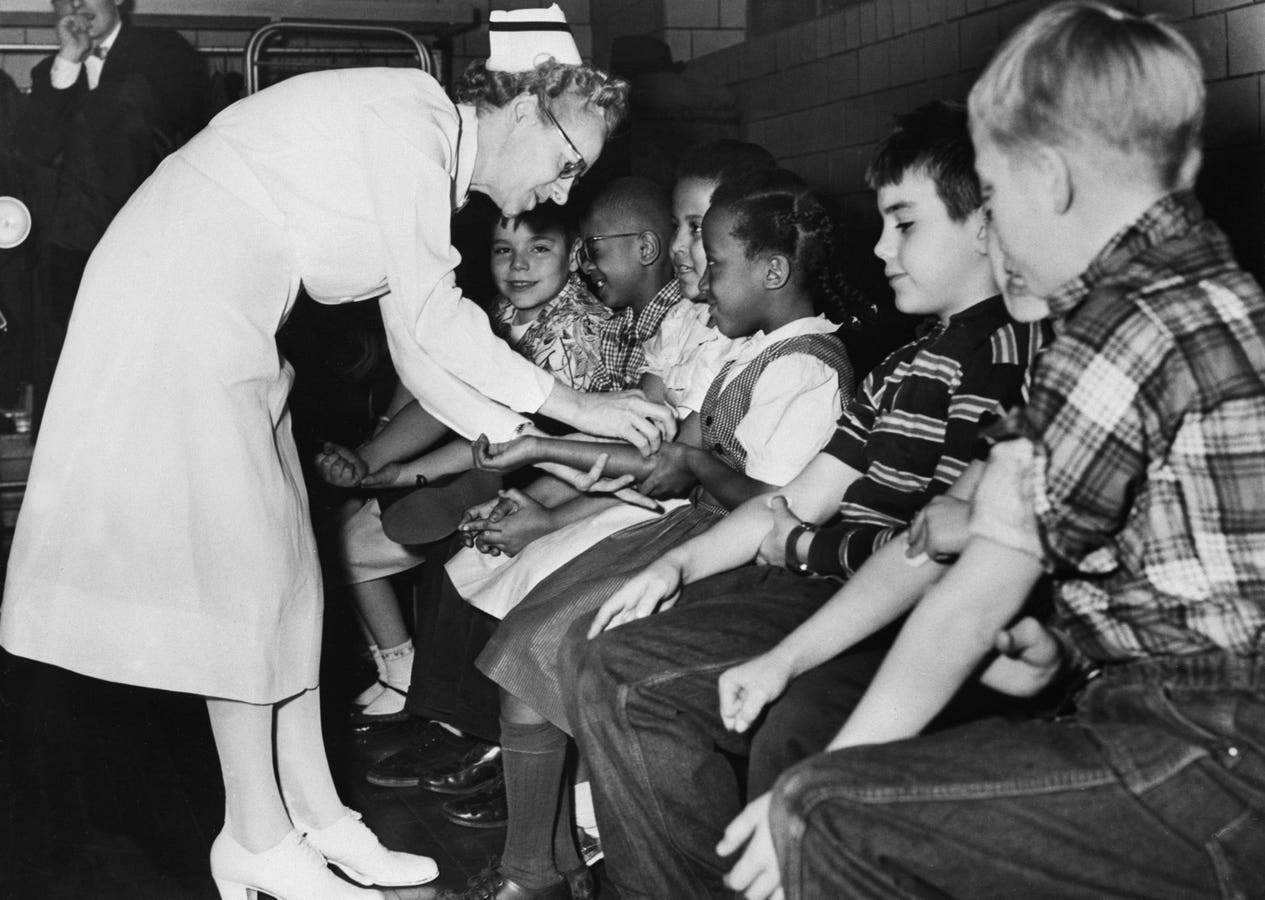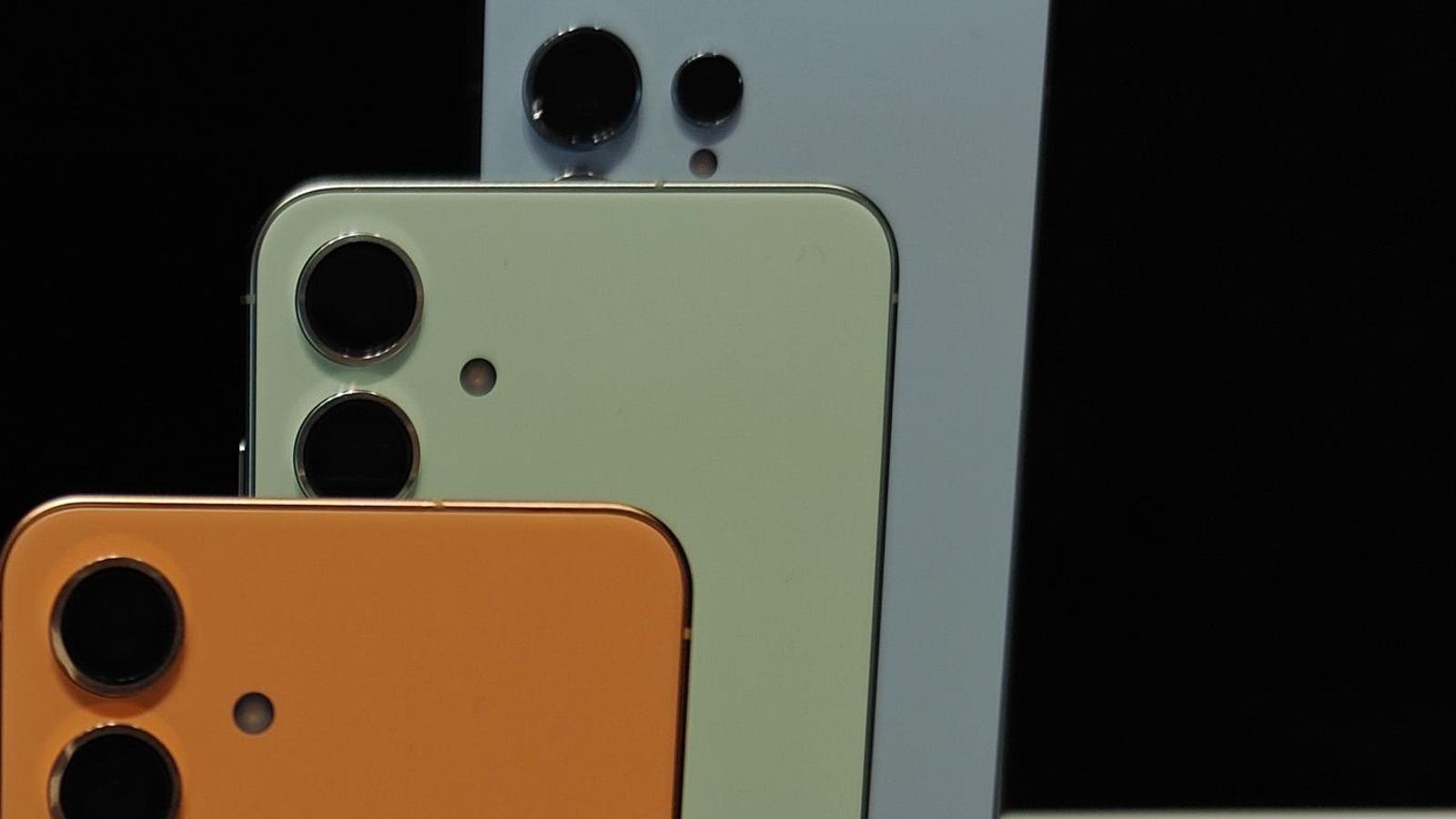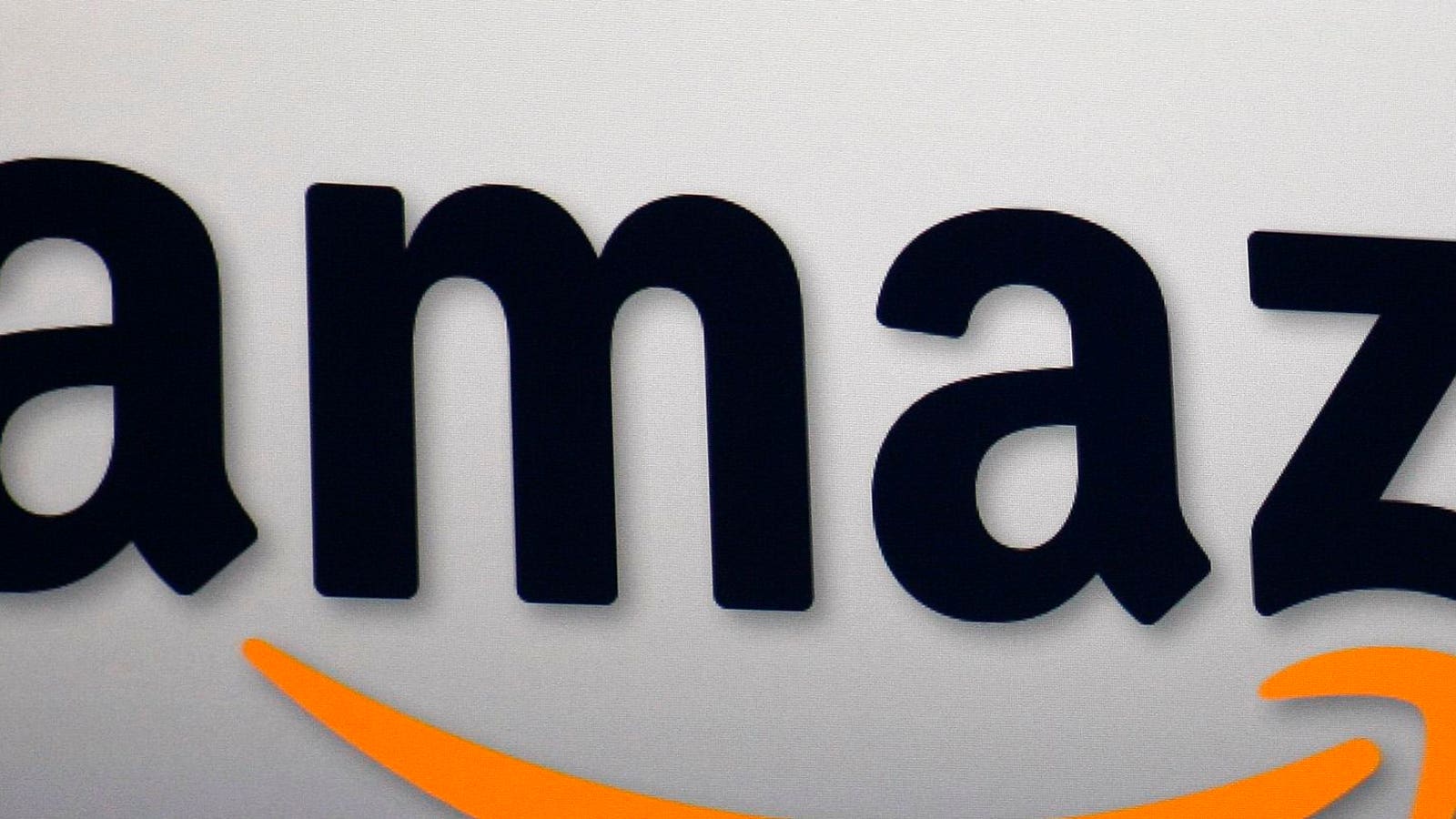A nurse prepares children for a polia vaccine shot as part of a city-wide testing of the vaccine on elementary school students.
Bettmann Archive
As students across the country shoulder backpacks and file into classrooms, another school year is in full swing under the quiet protection of science. Indeed, all of us remain the beneficiaries of decades of evidence-based health research, including vaccine development, which has extended human health and longevity beyond our ancestors’ wildest dreams. And it is not luck, it is good science.
Among our greatest public health discoveries in vaccine research was the development of the mRNA vaccine. These “messenger” vaccines were key to saving millions of lives during the COVID-19 pandemic and in staving off even more mortality because their design is adaptable to evolving viral threats. The strongest scientific foundation around vaccines extends to routine childhood immunizations. There is no debate that the routine childhood vaccine schedules have spared generations of my family and your family from devastating and, at times, deadly diseases, including polio, measles, and other terrible diseases. These early vaccine successes supported and accelerated the development of mRNA vaccines. Their plug-and-play design enables rapid development, unlike traditional vaccines that can take years to produce.
Actions by the Health and Human Services Secretary Robert F. Kennedy Jr. to cancel nearly half a billion dollars in funding to halt 22 contracts with universities and private firms developing mRNA vaccines completely sidelines its lifesaving potential and the health of families, friends, and communities. This innovative platform, which researchers are exploring for applications ranging from flu to cancer to AIDS, poses a threat to global defenses against future crises and hinders progress in biomedical innovation.
As a public health researcher and practitioner, it was my duty to provide a lesson as to the profound value behind vaccines.
Vaccines Work: Looking Back at History
Vaccines are among the most evidence-based, life-saving interventions in human history. Since 1974, vaccination campaigns have averted 154 million deaths, including 146 million among children younger than 5 years old, of whom 101 million were infants younger than a year old. For every death averted, 66 years of full health are gained, on average, translating to 10.2 billion years of full health gained. In 2024, a child younger than 10 years old is 40% more likely to survive to their next birthday relative to a hypothetical scenario of no historical vaccination. This is thanks to the 1982 UNICEF child survival and development revolution that paved the way to today’s mandate to cover vaccines against 13 vaccine-preventable diseases across the life course at the global level (tuberculosis, COVID-19, diphtheria, hepatitis B, H influenzae type B, human papillomavirus, measles, rubella, invasive pneumococcal disease, pertussis, poliomyelitis, rotavirus, and tetanus).
Looking back to 2020, we remember how severely COVID-19 ravaged nations like Italy—the United States was not far behind. Deaths piled up so quickly that we became numb to the escalating number. To date, the World Health Organization reports over 7 million COVID-19-related deaths around the world, but this figure likely underestimates the true toll. In the U.S., COVID-19 deaths have approached and even surpassed the combined toll from World War II, Korea, and Vietnam. Until the mRNA vaccine was developed and the COVID-19 vaccine rolled out, the COVID-19 virus was on a trajectory to rival modern wars regarding the loss of human life. Our country’s public health response, like the development of the mRNA vaccine, saved lives.
Vaccines are among the most carefully monitored medical technologies in existence. Post-approval safety systems, like the Vaccine Adverse Event Reporting System and the Vaccine Safety Datalink, track and investigate even the rarest potential side effects. That vigilance is why we can say, the evidence demonstrates that vaccines are safe, effective, and lifesaving.
A Call to Action
Just as no parent would send their child to school without the school supplies, they need to learn, we should not send our loved ones and their broader communities into another COVID-19 and flu season without the tools they need to stay healthy. Indeed, for over 123 years, the U.S. government and its expert agencies like the Food and Drug Administration and the Centers for Disease Control and Prevention, partnered with the health sector and communities at large to remain vigilant in the production of the best vaccines to keep all of us safe and healthy. Science has already given us these tools, and it is up to all of us to prioritize their use.
Scientific resolve is being undercut. As a strategy to polarize and politicize, vaccine skepticism not only disarms our disease prevention strategies, but it also sends a chilling message: science is optional. If we allow this to continue, if we let fear and misinformation drive policy, lives will be lost.
Furthermore, cutting off funding for the next generation of vaccine discovery abandons the people we all want to protect: our children, whose immune systems are still developing, and older adults, whose immune defenses naturally wane with age. It is not an abstract policy choice—it is a direct threat to the protection of those least able to fight off dangerous infections on their own.
Contact your elected officials and demand the restoration of funding for vaccine research. Share credible information from trusted sources with family and friends to counter misinformation on vaccines. And most importantly, vote for leaders who protect public health. Cutting funds for tomorrow’s tools is not just shortsighted, it is a betrayal of everything progress stands for. Pandemics will not wait for us to get our act together.









